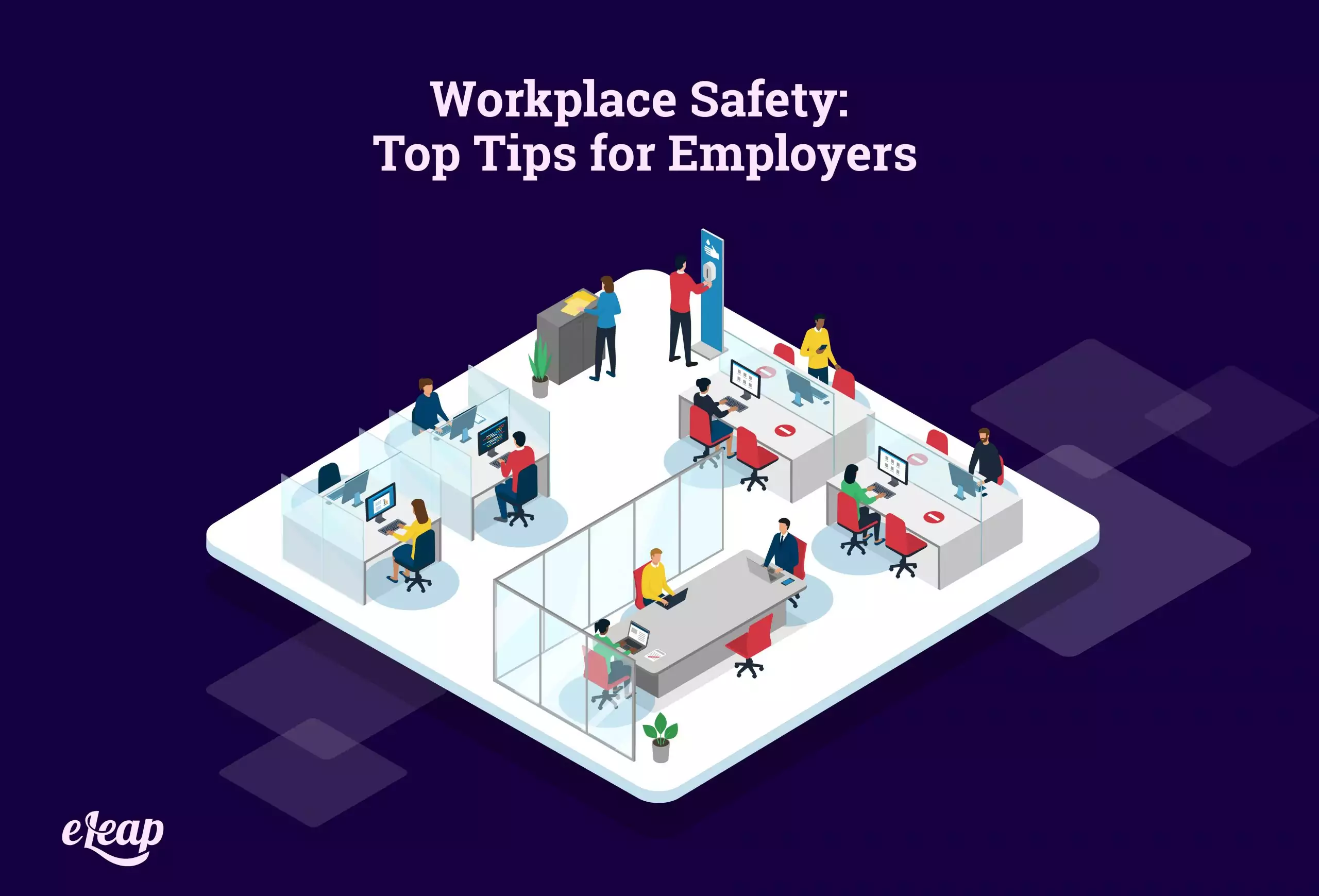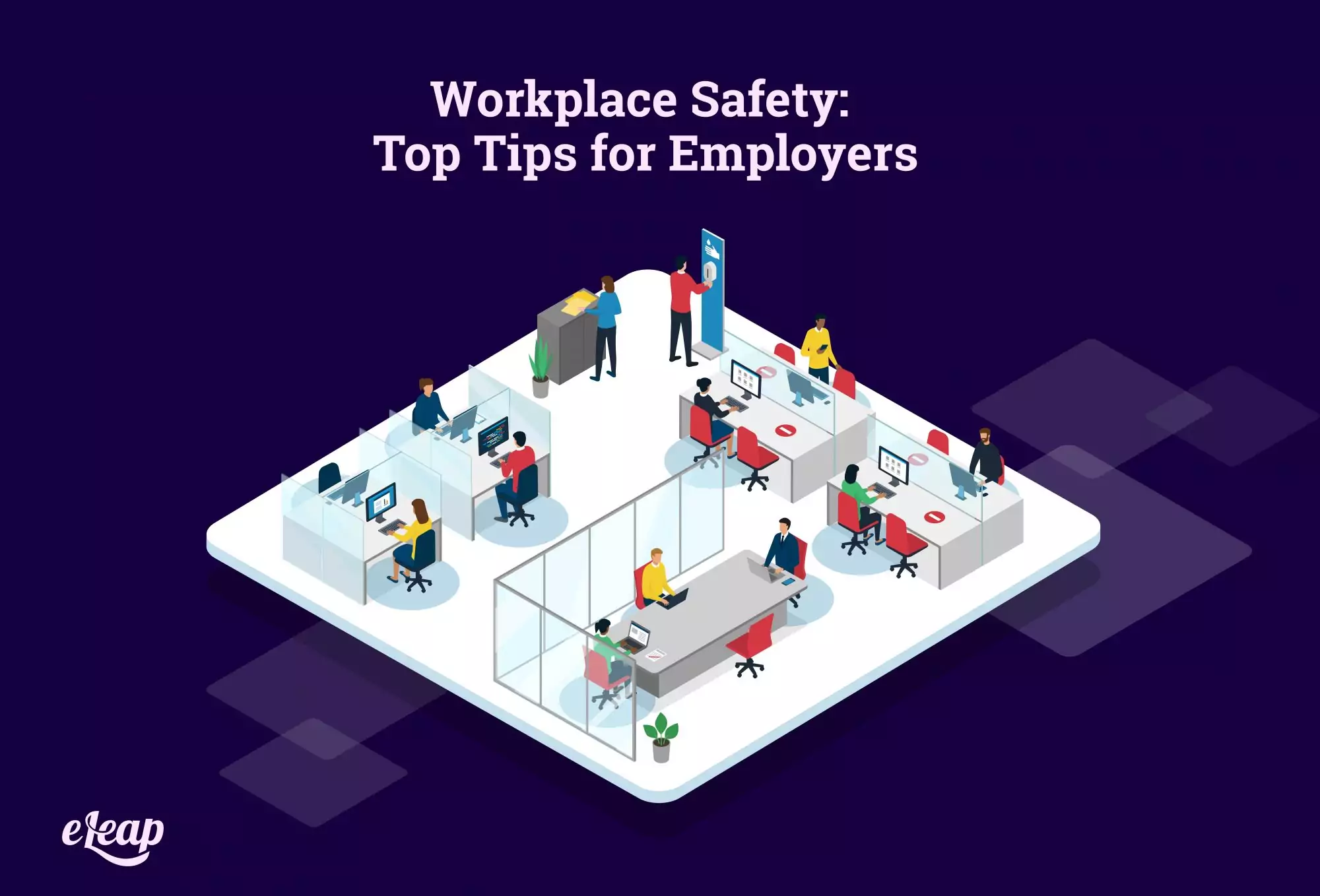Workplace Safety: Top Tips for Employers

Workplace Safety should be a crucial concern for any organization. Any workplace can be dangerous, whether we’re talking about a warehouse or your corporate headquarters. Risk can lurk in the most unlikely of places – a loose leg on a chair, spilled water on the concrete floor, or inattentive employees more focused on their conversation than on what’s going on around them. Improving workplace safety is vital, but it can also be challenging simply because of the vast range of risk factors.
If you are concerned about workplace safety, congratulations – you’ve taken the first step toward changing the situation. Awareness of risk and danger is vital. Once you become aware though, you need to begin taking action to mitigate risk and educate your employees on the hidden dangers. In this article, we will explore some of the most important workplace safety tips for employers.

Who Is Responsible for Safety?
Most workplaces have several people designated as safety officers, planners, resource officers, or something similar. These individuals play central roles in building awareness, disaster planning, ensuring safety protocols, and more. However, they are not responsible for individual employee safety. That onus falls on the employee themselves. It is important that you drive home that safety in the workplace is at once a team effort and an individual responsibility.
Ensure Procedures Are Documented
Many procedures can lead to injury or dangerous situations. It is important to ensure that proper procedures are documented, available, and understood by all employees who may need to perform those procedures. Creating hardcopy documents is vital. Making them available to everyone by storing them within a central location, or within easy reach of equipment or machinery, along with clear labeling, can go a long way toward ensuring that procedures are understood and followed.
Enforce Cleaning and Decluttering Rules
A dirty, cluttered workplace is a dangerous workplace. When aisles become cluttered, when files, boxes, and paperwork must be shifted to get at something underneath – those are the times when accidents happen. A clean, well-organized workplace is a much safer place to be and accidents will be rarer.
Ensure that your employees understand the importance of cleaning and organizing their portion of the workplace. Also, that they feel ownership over more public areas that don’t “belong” to one individual or even to a team. You should also create procedures or policies that spell out cleaning and organization-related requirements, such as taking out the trash, how long there is a requirement of maintenance of files, and more.
Watch Mats, Rugs, and Other Floor Coverings
Slip and trip hazards are among the most common dangers in the workplace. Wet areas should be protected with anti-slip mats, but it is also important to realize that sometimes the rugs, mats, and floor coverings used to provide traction, support, or comfort can also become safety hazards in their own right. Create a schedule for inspecting all floor coverings (including carpeting) for signs of wear or potential safety hazards. These can include the following:
- Frayed material
- Flipped corners
- Degrading backing material
- Cuts, rips, or tears
- Anything that might pose a trip or slip hazard
Any floor covering that might be a potential safety hazard should be replaced. Note that non-slip mats, rugs, anti-fatigue mats, and dust control mats will need to be replaced over time due to normal wear and tear.
Check Combustible Materials
All businesses have some combustible materials, whether we are talking about hardcopy tax records storage in boxes, cleaning chemicals in the janitorial closet, or something else. It is important to realize that no matter your industry or niche, fire hazards are very real threats. Note, not only must you store combustible materials properly, but you need to have clearly explained protocols for dealing with chemical spills and exposures that might increase the threat of fire.
Know Your Chemical Hazards
Whether you run an automotive shop with 55-gallon drums of brake cleaner stored out in the open or your janitorial closet contains dangerous chemicals that could mix and create safety hazards, these threats are real and very present. Make sure that you know what chemicals are in use in your facility, what threats they pose alone, and what can happen should they accidentally mix with other chemicals that you use. Some mixtures create noxious fumes, while others can ignite on contact. In addition to knowing the dangers these chemicals present, it is also important to post the material safety data sheets (MSDS) for each chemical in a central, easily accessed location. Note that this is also a requirement of OSHA.
Ensure Your Operators Are Licensed/Trained/Certified
Equipment plays a central role in your ability to do business, whether that’s a forklift, a jackhammer, a book binding machine, or something else. Every single machine in your business carries with it safety risks that must be understood and addressed. The best way to do this is to ensure that machine/equipment operators have the right training.
In some cases, this may be little more than an informal introduction to operation and maintenance. However, in other cases, operators may need formal certification or licensure in order to operate equipment and machinery. In those cases, recertification/relicensing is usually a requirement every few years. Understand the requirements for all your equipment and create protocols to ensure that your operators have the training and certification they need.
Signs in Danger Zones
All businesses have areas where specific hazards exist. Sign each of those appropriately to alert employees, visitors, and others to the threat. While you likely do not need warning signs in your office building’s hallways, you should certainly consider them in other areas, particularly those where specific threats are common or constant, including:
- Wet floors
- Hazardous materials
- Hazardous chemicals
- Electrical shock
- Moving vehicles (including warehouse equipment like forklifts)
Create a Safe Workplace
The tips above should help you create a safe workplace for everyone. However, do not neglect the importance of safety awareness training for your employees. Here, your learning management system (LMS) is the key. A modern, cloud-based system offers flexible learning solutions that engage your employees. Also, it helps them build the safety-related knowledge base they need. Go here to learn more.